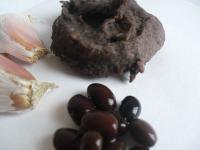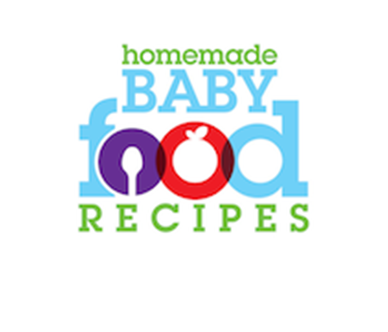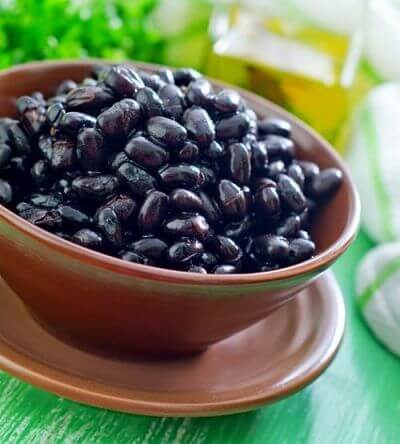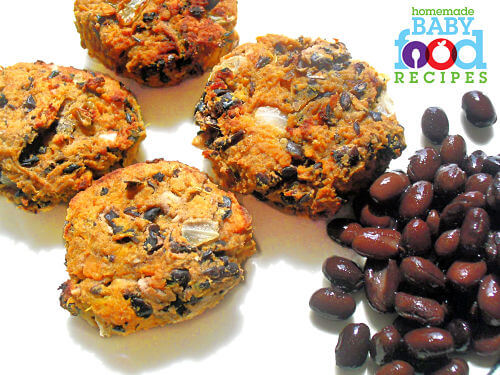Black Beans Baby Food Recipes
Updated: Sept 26th, 2023
Black beans are one of those foods that don’t immediately spring to mind when you think about cooking for your baby.
But once you discover just how useful a part these little legumes can play in the diet, you’ll be wondering why you never considered adding them to baby’s menu before!
Variously known as turtle beans or frijoles negros, black beans have been a staple of Latin cuisine for thousands of years.
Similar to peas in size, with a velvety white centre and with a rich flavour often compared to mushroom, they can be incorporated into your baby’s diet at almost every stage.
On this page, we’re going to be looking at how to make everything from black bean purees to creative finger foods!
NOTE: Please check with your doctor before introducing these recipes to your baby.
The information given here is for guidance only and does not replace professional medical advice.
nutritional facts
Black beans contain a LOT of nutrients!
In fact - according to research published in the Journal of Agriculture and Food Chemistry - black beans are as rich in antioxidants as grapes and cranberries and have 10 times as much as oranges!
Antioxidants, as you know, play an important part in protecting the body against diseases like cancer and also support heart health.
Studies on a variety of legumes have revealed that the DARKER the beans, the MORE antioxidants they contain.
So it stands to reason that black beans are the richest source of all!
But if you thought THAT was impressive, just look at what else these beneficial beans have to offer…
- fibre (both soluble and insoluble, meaning they will help prevent constipation and keep baby ‘regular’, plus they can play a part in regulating cholesterol in later life)
- iron
- vitamin B
- manganese
- protein
THE IMPORTANCE OF BLACK BEANS IN A VEGETARIAN DIET
If your baby will be following a vegetarian diet, then there are two reasons why black beans will be particularly useful!
- Served with a whole grain like brown rice or whole wheat pasta, black beans provide protein equivalent to that found in meat.
- Black beans tend to be very dense, making them an ideal meat replacement in terms of texture as well as nutrition.
When can my baby eat black beans?
Although some babies are enjoying black beans and other legumes from around 6 months of age, you might prefer to wait until your little one is around 7 to 8 months before introducing them, rather than offering them as a ‘first’ food.
The reason we say this is that – like other legumes – black beans may give your baby gas (wind), potentially causing tummy discomfort… and a lot of ‘tooting’!
Nevertheless, just like other legumes, black beans certainly shouldn’t be AVOIDED for that reason.
Instead, it’s a good idea to take measures to reduce the likelihood of the problem occurring.
There are several ways in which this can be done – and we’ve listed them here on our Lentil Baby Food page.
The steps described can be used for all dried legumes and are particularly useful to know when cooking for your baby!
Please note the suggestion that you offer beans and other legumes often (just a little at first, building up slowly to more substantial quantities).
This helps gently condition your baby’s body to process them effectively.
Those who consume legumes on a regular basis tend to be unaffected by uncomfortable gas (otherwise beans certainly wouldn’t be as popular as they are!).
Whilst black beans aren’t listed as a common allergen, it’s worth noting that they come under the legume ‘umbrella’.
This means they are related to soybeans, which ARE considered to be allergenic.
If your baby is allergic to soy, then please discuss the introduction of black beans with your child’s doctor.
Black beans and other legumes may not be suitable for babies with G6PD Deficiency – please see this page for more information.
Buying and storing black beans
Black beans are generally available dried or canned.
We recommend using the dried variety because
- they are cheaper than canned black beans
- you can prepare them without salt for your baby
- you can use the steps we recommended earlier in this article to reduce the beans’ potential for causing flatulence (canned beans won’t have undergone these extra steps during the cooking process)
Nevertheless, canned baked beans make an acceptable alternative if you prefer to use them.
They’re convenient and very similar in nutritional value to the dried-then-cooked-at-home variety!
Do watch out for the salt content, though, and either buy a salt-free/low sodium brand, or give the beans a good rinse before use.
If you buy dried beans, you might find it cheaper to buy them from ‘bulk bins’.
If so, then ensure the store from which you buy them is busy enough to ensure rapid turnover (so you’ll know they’re not stale) and that the bins are hygienically covered.
Make sure the beans don’t look at all shrivelled when you buy them and check carefully for the tell-tale ‘pinhole’ signs of bug infestation.
Dried beans can be kept in an airtight container, in a cool place, for up to 12 months.
Once you’ve cooked them, you should use them within 48 hours, either by serving them or freezing them for future use.
How to cook dried black beans
Dried beans need to be soaked before cooking.
First, sort through them, removing any little stones or debris.
Next, place the beans in a large bowl of water and leave then overnight (keep the bowl in the fridge or you run the risk of them fermenting, particularly if – like us – you live in a very hot climate).
For a speedier soak, you can bring the beans to the boil in a large pan of water, then switch off the heat and leave for around 4 or 5 hours.
Once the beans are properly soaked, you can cook them for your little one.
Use the ratio of 3 cups of liquid to 1 cup of beans – we cook ours in chicken stock for extra ‘yum’ factor, but you can use plain water.
Simply bring the pan of beans to the boil, then reduce the heat to a simmer.
Semi-cover the pot and cook for 1 1/2 to 2 hours until the beans are tender, occasionally skimming off any foam that forms on top.
Aside from the fact that your baby does not need extra salt, you should ALWAYS avoid adding salt – or acids like lemon juice – to the beans as you cook them.
Salt or acids will make the beans tough and should be added (when appropriate) AFTER the beans are cooked.
Black beans as a finger food
You may also like: Black Bean and Brown Rice Dinner with Avocado and Apple – a complete protein baby food recipe
Whilst black beans make great purees and other ‘spoonable’ dishes, we think they REALLY come into their own as a finger food.
Ideal for when your baby has developed the ‘pincer grip’ and is able to pick up food between his forefinger and thumb, black beans have a wonderful, gummable texture, hold their shape well during cooking and make a super nutritious snack.
They are a great, non-messy food to take when you are out and about with your little one – and, if using the canned variety, they don’t even need refrigerating until you’re ready to use them.
Just rinse and they’re ready to eat… how convenient is THAT?
Our little ones have always coped with the whole bean – skin and all – but you can slip the skin off before serving if you prefer.
You might also like to squash the beans a little bit, to make them easier to handle.
Homemade baby food equipment…
Homemade baby food accessories
Black beans baby food recipes and ideas
Here are some great ways to prepare black beans for your baby…
- Use your black beans purees as dips or sandwich fillings.
- Mix with rice to create a meal offering complete protein.
- Serve a bowl of black beans and diced avocado, sprinkled with homemade yogurt cheese, as a finger food for self feeders.
- Mash the beans roughly, mix with natural yogurt and serve as a topping for baked potato.
- Combine pureed black beans with cooked tomato and pureed carrot – delicious!
- Mash with canned tuna, salmon or sardines for a quick and easy lunch.
Black Bean Puree
Simply process cooked black beans in a blender (see how to cook black beans, adding breastmilk, formula, water or stock until you reach the desired texture.
Freeze leftover portions for up to 1 month.
Gourmet Black Bean Puree

This may not be the prettiest puree around, but it sure is tasty!
3 tbsp cooked black beans
1 tbsp chopped onion
1 small garlic clove, crushed
little olive oil
pinch ground cumin
2 to 3 tbsp low sodium or homemade chicken stock
- Saute the onion and garlic in a little olive oil until tender.
- Place the cooked onion and garlic in a blender and add the black beans, stock and cumin.
- Blend until smooth, adding a little more stock if necessary.
VARIATIONS: Add 2 tbsp chopped, fresh or canned tomatoes to the onions as you cook them, then blend with the other ingredients (note that the tomatoes will add liquid to the dish, so you will need less stock to thin it).
You can also take this recipe and create a black bean soup by simply increasing the amount of stock you add to create a more ‘liquid’ texture.
Creamy Coconut and Black Bean Puree
2 tbsp cooked black beans
4 tbsp unsweetened coconut milk
1/2 small onion, chopped
little olive oil
1/2 small, ripe avocado, pitted
pinch cumin
- Saute the chopped onion in the olive oil until tender.
- Meanwhile, simmer the cooked beans in the coconut milk in a small saucepan for a couple of minutes.
- Transfer the cooked onion, black beans and coconut milk to a blender and add the cumin.
- Puree, then mix with the mashed avocado and serve.
Black Bean and Brown Rice Dinner
4 tbsp cooked black beans
3 tbsp cooked brown rice
1 tbsp cooked tomato, chopped
1 tbsp sweet corn kernels
- Combine the ingredients and either serve as they are, or puree (adding a little breast milk, formula, stock or water if desired).
Black Bean and Sweet Potato Treat
1/2 cooked, small sweet potato (peeled)
1 tbsp cooked black beans
2 tbsp coconut milk
pinch of each of the following: ground ginger, ground cinnamon, ground cloves
- Simply mash or puree the ingredients together, thinning with a little breast milk or formula if necessary.
Butternut Squash and Black Bean Tortilla
A great finger food for self feeders!
4 oz (1/2 cup) cooked butternut squash
1 small onion, chopped
little olive oil
1 garlic clove, crushed
1/4 tsp ground cumin
1/4 tsp ground coriander
4 oz (1/2 cup) cooked black beans
1 tbsp fresh cilantro (coriander) leaf, chopped
1 whole wheat tortilla
- Preheat the oven to 350 deg F (170 deg C).
- Saute the onion and garlic in a little olive oil until tender.
- Stir in the spices and cook for a minute or two, then remove from the heat.
- Combine the butternut squash, black beans and cilantro in a blender and process until smooth.
- Stir in the cooked onion and garlic.
- Grease a square of foil.
- Spoon the mixture into the centre of the tortilla and roll it up.
- Wrap the tortilla in the foil and bake for 30 mins.
- Cool and serve – we like to offer this with some avocado slices on the side!
Black Bean and Chicken Salad
For older babies enjoying texture.
1 tbsp cooked chicken breast, cubed
1 tbsp cooked black beans
1/2 small, ripe avocado, pitted
pinch cumin
2 to 4 fl oz (1/4 cup to 1/2 cup) natural yogurt
- Place the cubed chicken and avocado in a bowl with the black beans.
- Stir the cumin into the natural yogurt, then stir enough yogurt into the contents of the bowl to coat all the ingredients.
This can be eaten with a spoon or served as a finger food (in which case we recommend that you don’t add too much yogurt!).
FROM OUR BLOG:
We hope your baby enjoys these black beans baby food recipes – if YOU have any recipes you’d like to share containing these wonderful legumes, then please do send them in.



